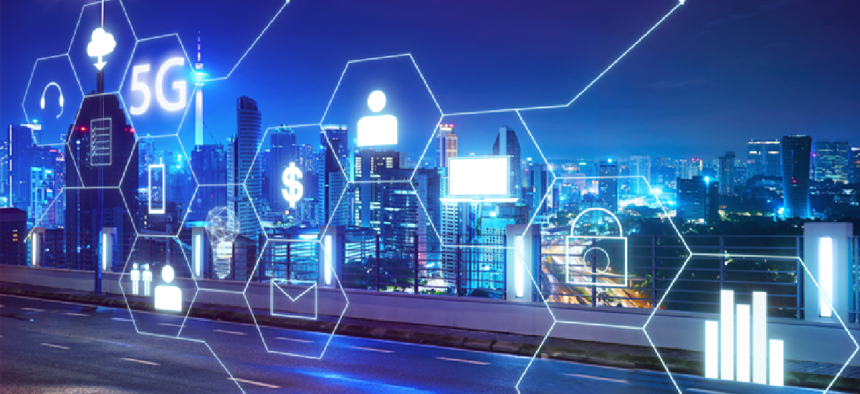5 ways 5G can support government


Connecting state and local government leaders
With higher speeds and lower latency, 5G networks will transform how government operates.
The next great technology enablement platform for government is about to become reality. 5G technology will improve network connectivity by delivering lower latency, improved battery life and the ability for networks to handle more data. Here are five ways we expect 5G to impact government agencies.
1. Smart everything. 5G brings a multitude of benefits, including the ability to support massive internet-of-things networks. As part of the evolution to 5G standards, low-power wide-area technologies are connecting larger number of IoT sensors and extending battery life. That means more capability to support the creation and operation of smart cities, smart buildings and even smart military bases.
A "smart base" trial in 2017 focused on base perimeter security, connecting and monitoring a complex set of data sources -- infrared sensors and security cameras -- to a network and managing the data output from a common operating portal. The next logical step was to add more services to the IoT solution, such as fleet management capabilities, infrastructure monitoring and traffic control solutions.
Massive 5G-based IoT networks will support a greater number of sensors chirping more data than previous technologies as they collect and transmit information. That will open the door to integrated lighting systems, energy, water and waste system management, and connected surveillance systems that help improve public safety.
The low latency of 5G has the potential to transform traffic flows within a city. Near-real-time traffic data can help with quick re-routing of traffic in the case of an accident or help first responders control traffic signals to reach an emergency faster.
2. Citizen engagement. The mobility revolution sparked improved citizen engagement and accelerated government's transition to more digital-based services. With 5G, we can expect greatly enhanced and new forms of citizen engagement to emerge.
Mobile, 5G-enhanced connectivity will make sharing video nearly as fast as sending text messages is today, enhancing the power of video as a tool to exchange information – whether it's critical public safety issues or mundane pothole repairs. We can also expect 5G services to further transform the number and quality of government and citizen interactions and improve public services. 5G will impact nearly everything government touches -- school safety, management of the homeless population, public health matters, voting registration and processes, census taking and all manner of public works. The relationship between businesses and government will also be transformed by digitized permitting and tax and compliance tasks.
3. The government workforce. Government workers are empowered like never before thanks to connected devices. The low latency advantages of 5G services can support a combination of applications that improve their ability to support the mission, whether that's augmented reality, virtual reality or autonomous vehicles. All of these technologies will mature and communicate with each other much faster with the arrival of 5G.
A new wave of 5G-based apps, such as immersive applications that support training, mapping government land or water and soil sample testing, will likely transform the way government field workers get their jobs done.
4. National defense. The arrival of 5G portends greater use of augmented reality, virtual reality and other applications that can support the defense mission. This ranges from training the warfighter and war gaming to speeding the delivery of apps and services to the network edge to support combat missions. The integration of data streaming from connected sensors, wearables and drones will provide a richer set of information in near-real time to improve strategy, allow adjustments on the fly and better protect the brave women and men who put themselves in harm’s way to defend our freedoms.
5. Cybersecurity benefits. Cybersecurity is always paramount for government, and a 5G-enabled software-defined network can embed the latest cybersecurity capabilities that can dynamically detect and mitigate known threats and cyber anomalies at the farthest edges of the network.
As 5G reaches full deployment, embedded security combined with 5G’s ultra-low latency will enable instantaneous, anywhere access to dynamic content. Forward-thinking government agencies must start brainstorming now about how they might benefit from 5G services. We look forward to helping put the “G” in 5G: Government.




